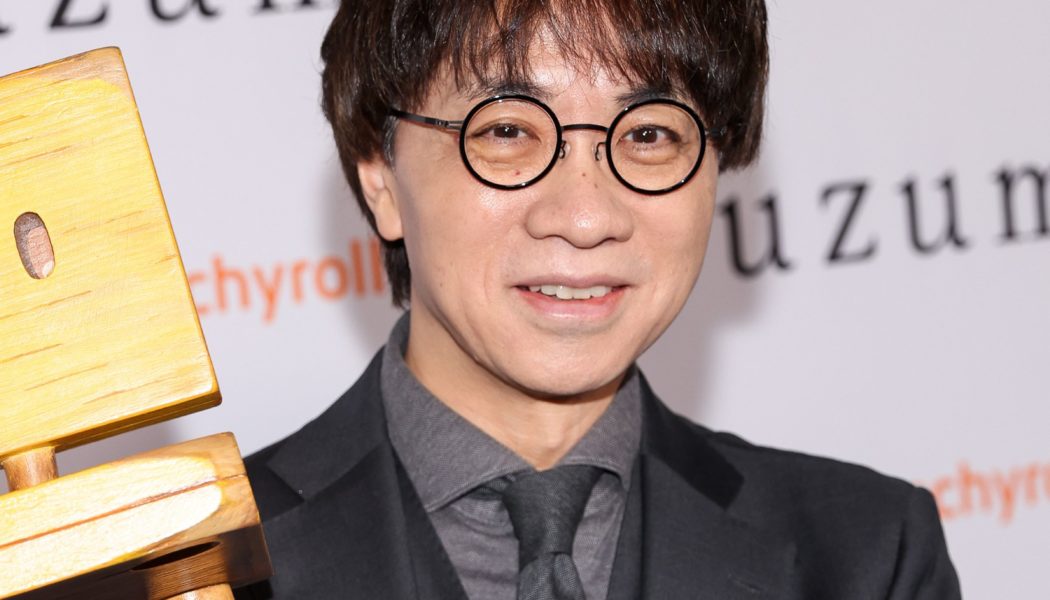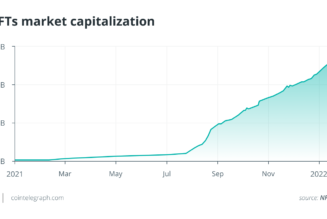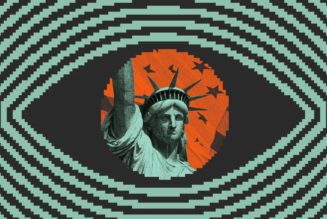Suzume director Makoto Shinkai sees his latest film as an invitation to young theatergoers to build relationships with the past.
Share this story

In Suzume, Your Name and Weathering with You director Makoto Shinkai’s latest film, an ordinary highschooler finds herself pulled into a life of chasing down otherworldly creatures and sealing portals that would otherwise unleash catastrophic tectonic devastation across Japan. Out of all of Shinkai’s animated features, Suzume’s one of his most direct in the way it draws upon Japan’s real-world history with natural disasters to tell an epic story that plays like a love letter to the country and all its natural beauty.
For all its focus on Japan, however, there’s an undeniable universality to many of Suzume’s messages about growing up and understanding one’s relationship with the past. While Shinkai didn’t necessarily set out to make a film that would speak to absolutely everyone, when we sat down to chat recently ahead of Suzume’s release this week, he was emphatic about his desire for the movie to speak to younger moviegoers especially.

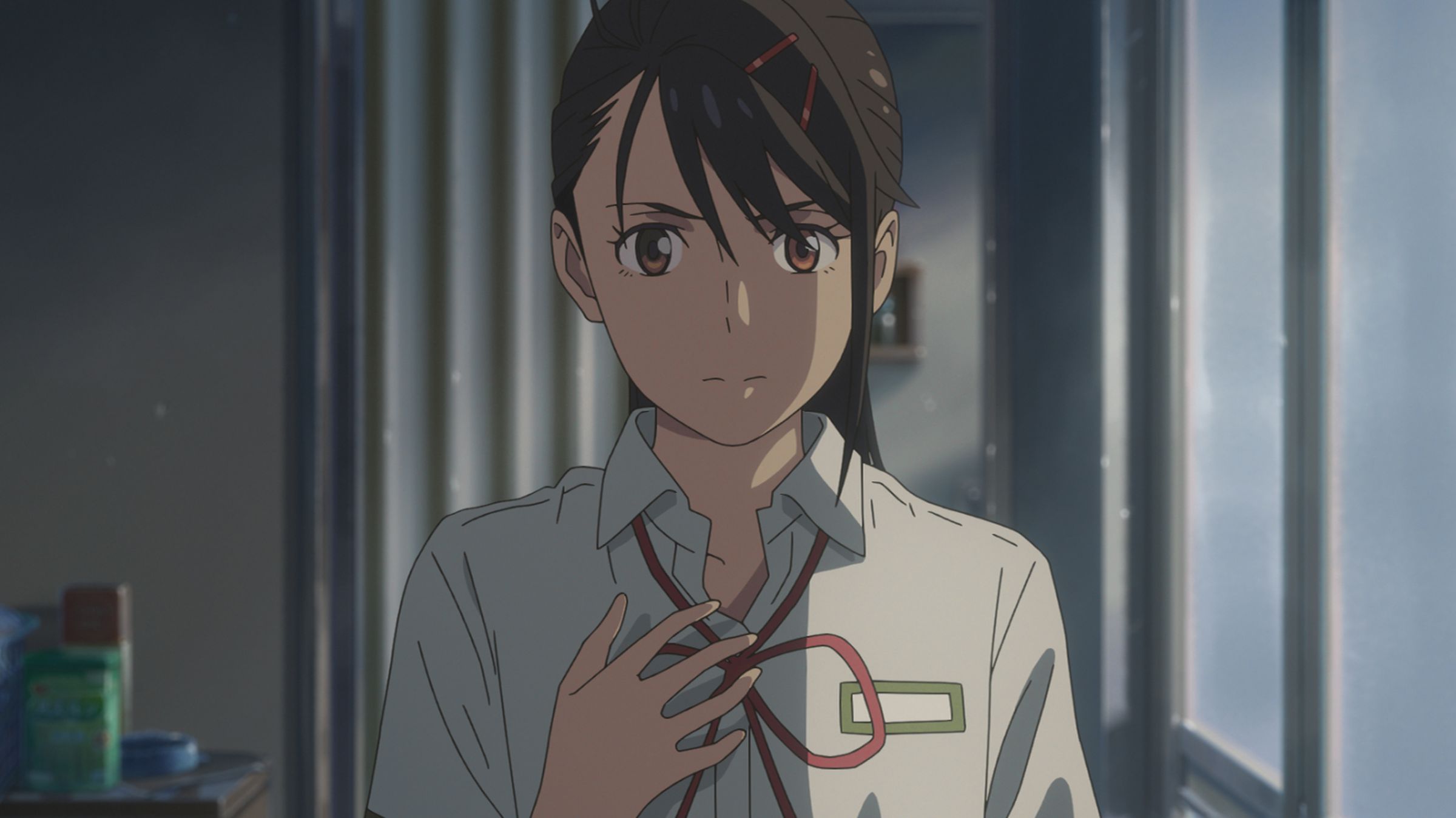
You’ve been very frank about Suzume being a story about the existential crises Japan faces as it deals with natural disasters and problems like population decline. Both of those issues are so serious and difficult to frame as anything but negative. What was most challenging for you about telling a story that’s so honest and unflinching about the problems Japan is dealing with, even though they’re things people might not want to face head-on?
As you mentioned, the 2011 Great East Japan earthquake is a very central theme in Suzume, and I wanted to use the film to help put it all into perspective. The disaster only happened 12 years ago, but for me, it was important to put that into the context of entertainment. That combination of taking such a grave subject matter and putting it in front of an entertainment backdrop… there was a lot of resistance, I think, from the Japanese moviegoing audience. But for me, because the subject matter was so serious, it was important to give it some comic relief or put it into a more entertaining type of context.
Had I said, “Hey, I’m making a movie about the 2011 disaster; it’s an exposition documentary, and it’s like a textbook guide on how to navigate it,” I don’t think anyone would have come to see that film — especially so with younger audiences. So it was important to me that Suzume be both serious and entertaining because I think a lot of younger moviegoers either haven’t experienced this incident from 12 years ago — this massive disaster — directly, or even if they did, they were so young that they probably don’t recall it at all. Without [Suzume] being a spectacle, I don’t think people would have even been open to seeing it.
There are a lot of these issues that I think we need to come face to face with that demand our attention. But it’s hard to face them in a way or put them into a context where younger audiences will be open to discussing it. So in some ways, I think Suzume is connecting the older and younger generations through this sort of communal or unified experience.

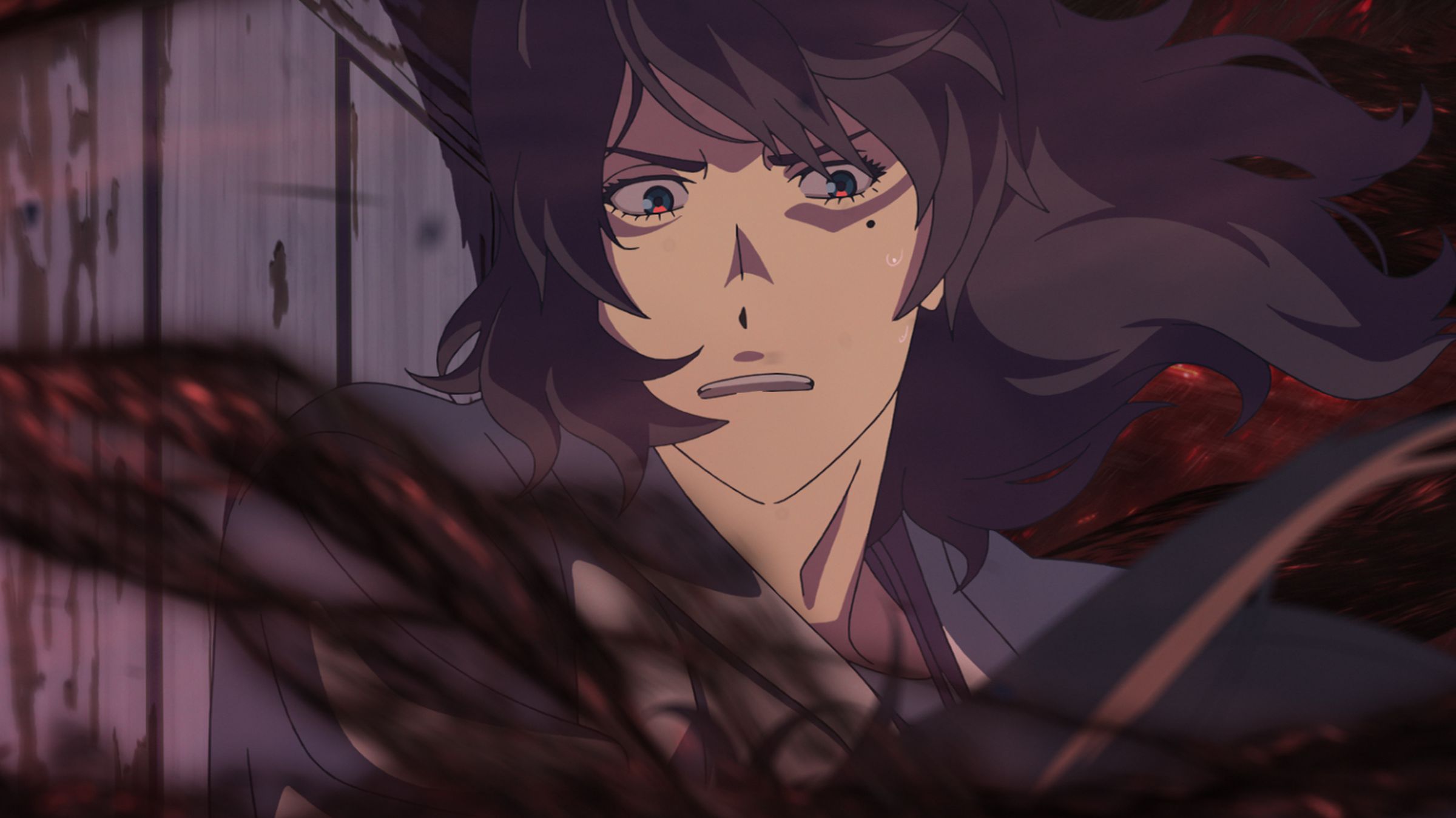
The film’s worms are such an interesting and terrifying metaphor for Japan’s history with earthquakes, but I was really struck by the idea of closing doors being the only way to avert disaster as opposed to, say, a story’s protagonist having to just fight a big monster. Talk to me about how those ideas came to you.
When I was growing up in Japan as a young kid, it was the so-called golden era of Japan, where the economy was booming, and the population was increasing. I personally grew up in the countryside of Japan, and in spite of that, there were new homes being erected one after another. But as I became an adult, that era of economic growth and surge came to an end, and I think instead, we became more and more surrounded by stagnation or even ruins as a result of natural disaster, simple human behavior, or population decline. In my mind, that was not really the time to be opening new doors, in a sense.
That idea has stuck with me, but in the case of Suzume, I thought that making a movie about opening new doors would be unreasonable and wouldn’t resonate with Japanese audiences — partially because I was developing this movie during covid, during the lockdowns.
There was a lot of discussion at the time in Tokyo about “do we have the Olympics? Do we postpone it, or do we do it?” Even that discussion and the drive to host the games in spite of the pandemic and all the world events happening, to me, felt irresponsible to some degree. You were opening this new door and not sure of what’s on the other side without bringing closure or understanding or coming to terms with what’s behind you. I want to say a lot of the Japanese population felt the same way. There was this kind of awkward air about us, and it really wasn’t time to open new doors without first reflecting on what came before us.

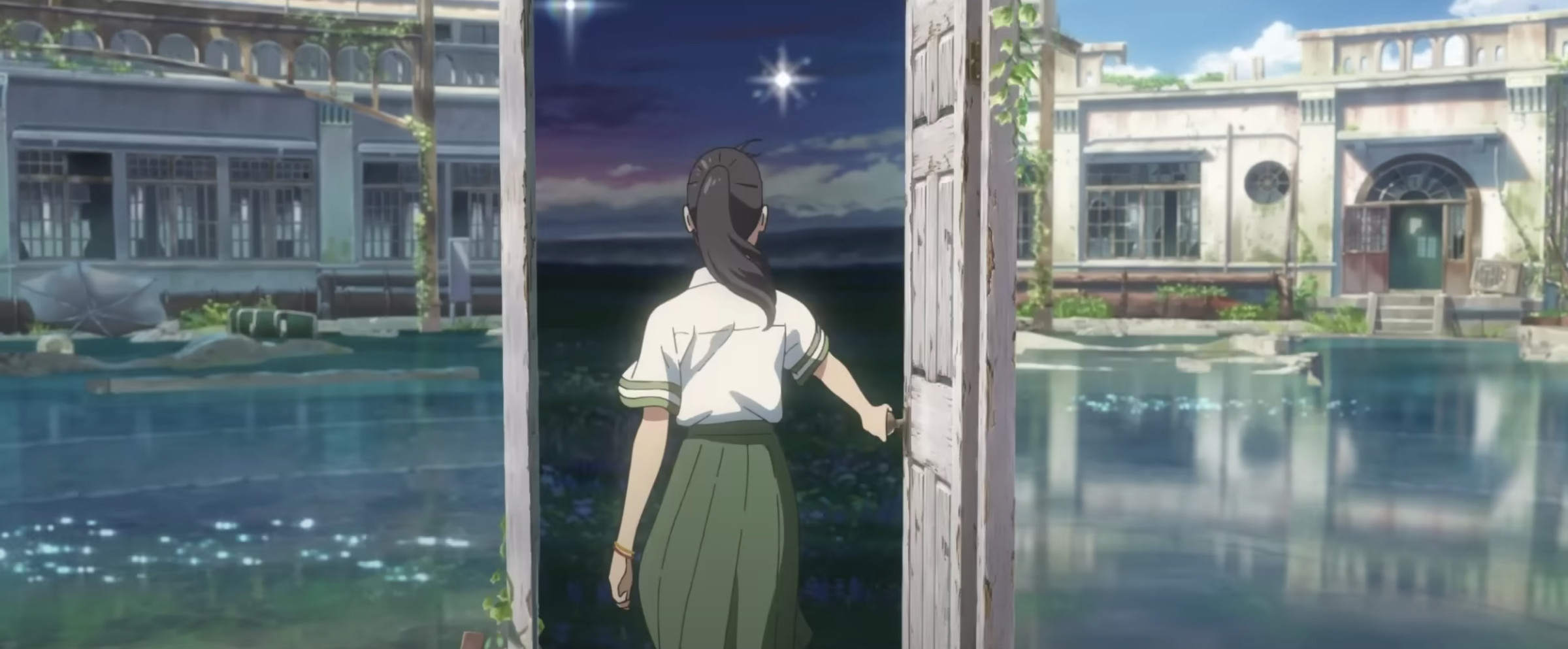
You’ve spoken about Suzume partially being a rumination on Japan’s declining population, and you can feel some of those anxieties being reflected in Tamaki’s relationship with Suzume. But there’s also a distinct sense of hope there between them, especially in the way that they both seem to trust each other to make the right decisions, even as they’re bickering. What aspects of Japanese society did you want to define Suzume’s dynamic with her aunt?
When thinking about the relationship between Tamaki and Suzume, I get the sense that the very fabric of Japanese society is entrenched there — this idea of a traditional nuclear family where you have two parents and kids who are obviously connected by blood, and it’s that family’s responsibility to navigate society and conform to these social values. But I don’t think that that type of family structure is really a reality, or to demand that in our current environment is realistic because, of course, you have single mothers or children with no parents at all, and there can be different types of family structures.
In spite of all this, society demands that we conform to this ideal shape. I think there’s a huge gap there right now, and I wanted to show that there are certain parental relationships that can exist — perhaps even without the connection of blood — and kind of thought-provoke people into seeing that maybe there are other ways that we can create what we understand as a family.
We only see a tiny bit of how Daijin becomes something of a social media celebrity as he’s running around Japan, but it’s such an interesting little character detail, particularly for an antagonist. What ideas about ordinary people and society at large did you want to illustrate through Daijin’s fame?
That’s a very interesting way to see Daijin and his relationship to social media. After completing the film, only then did I realize the sort of irony of this antagonist — how we’ve turned him into a celebrity as a society. But I don’t think I considered that relationship too extensively; it was more my intent to depict the current shape of our society.
We’re surrounded by technology; everyone has a smartphone. But at the same time, in Japan especially, there are a lot of traditions and routines and ideas with deeply grounded cultural roots that are also very confining and that I think a lot of the younger generations feel trapped by.

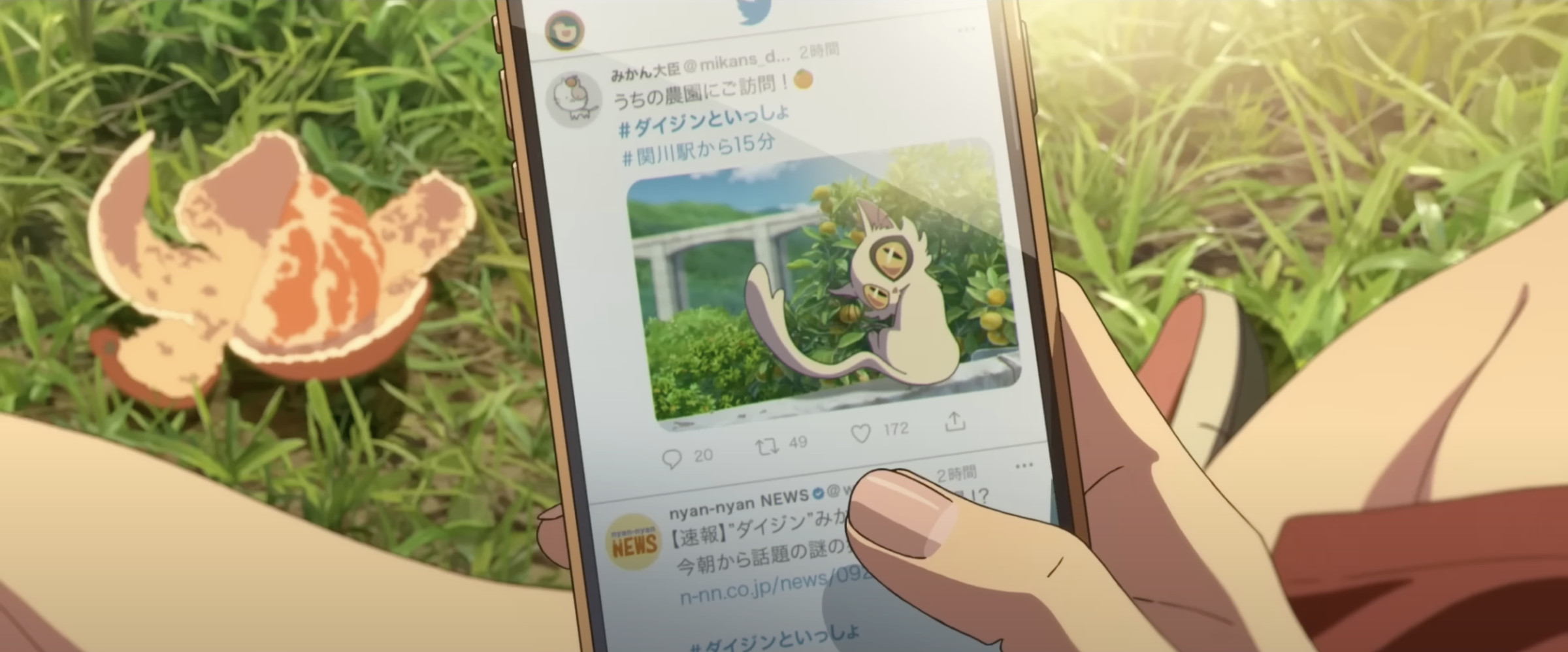
Take Sota’s job as a closer, for example. Of course, that doesn’t actually exist, but the act of praying and willing something into existence goes all the way back to the Buddhist and Shinto roots. We can see artifacts of those traditions still in our present-day society, and there is a certain level of slightly illogical and almost inefficient behaviors that are part of our daily routine.
The purported goal with technology is always about finding ways to remove friction and inefficiency from our everyday lives despite all the routines that we undertake to maintain some kind of semblance of tradition. But there’s always a gap there, and that’s what I wanted to put into perspective with Daijin and social media.
